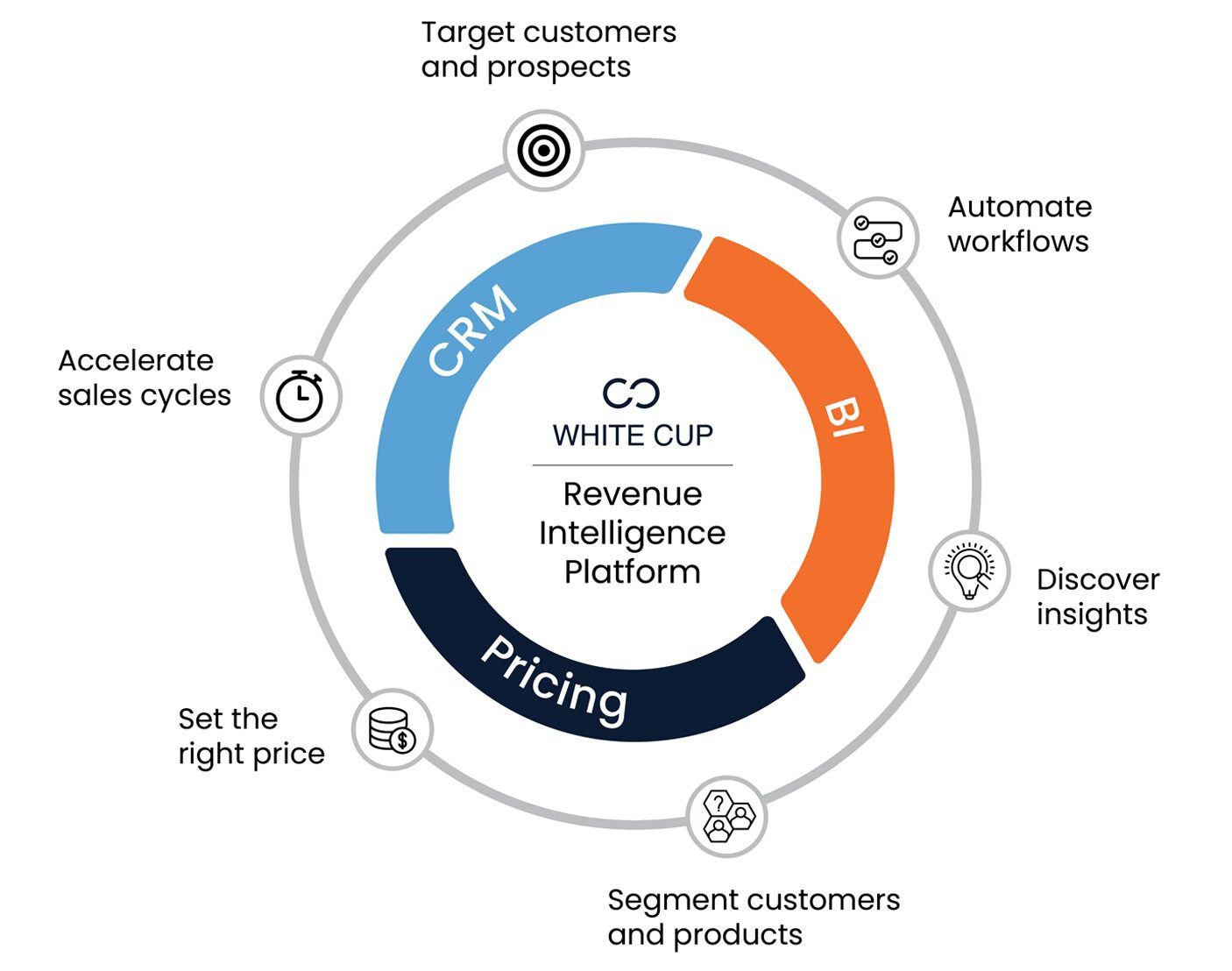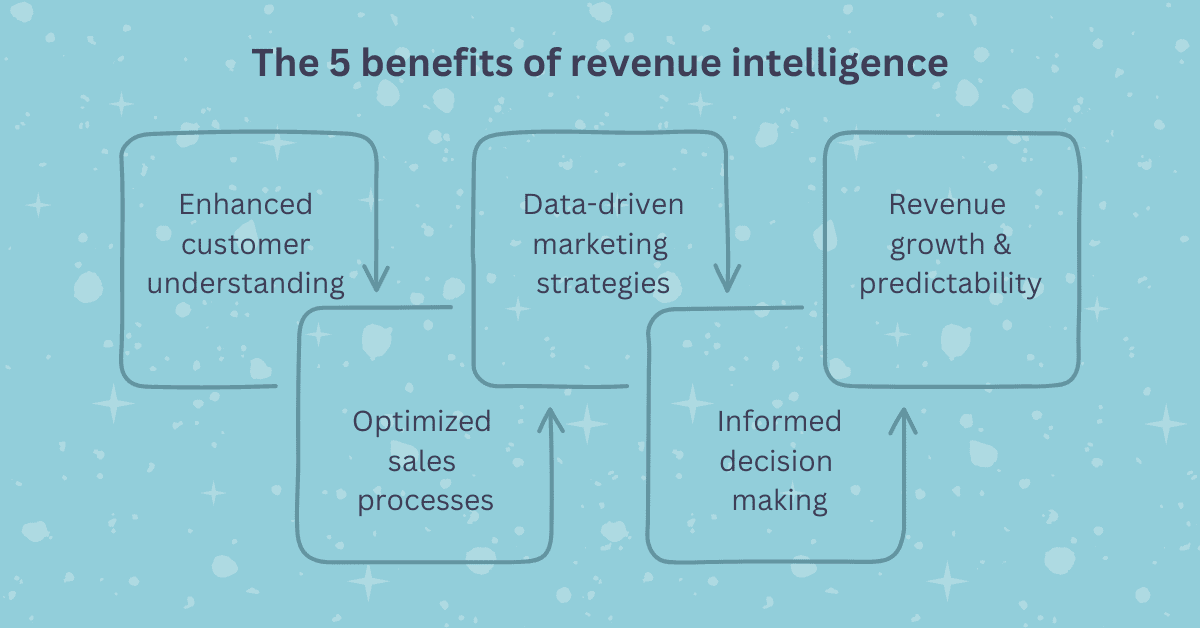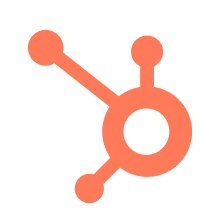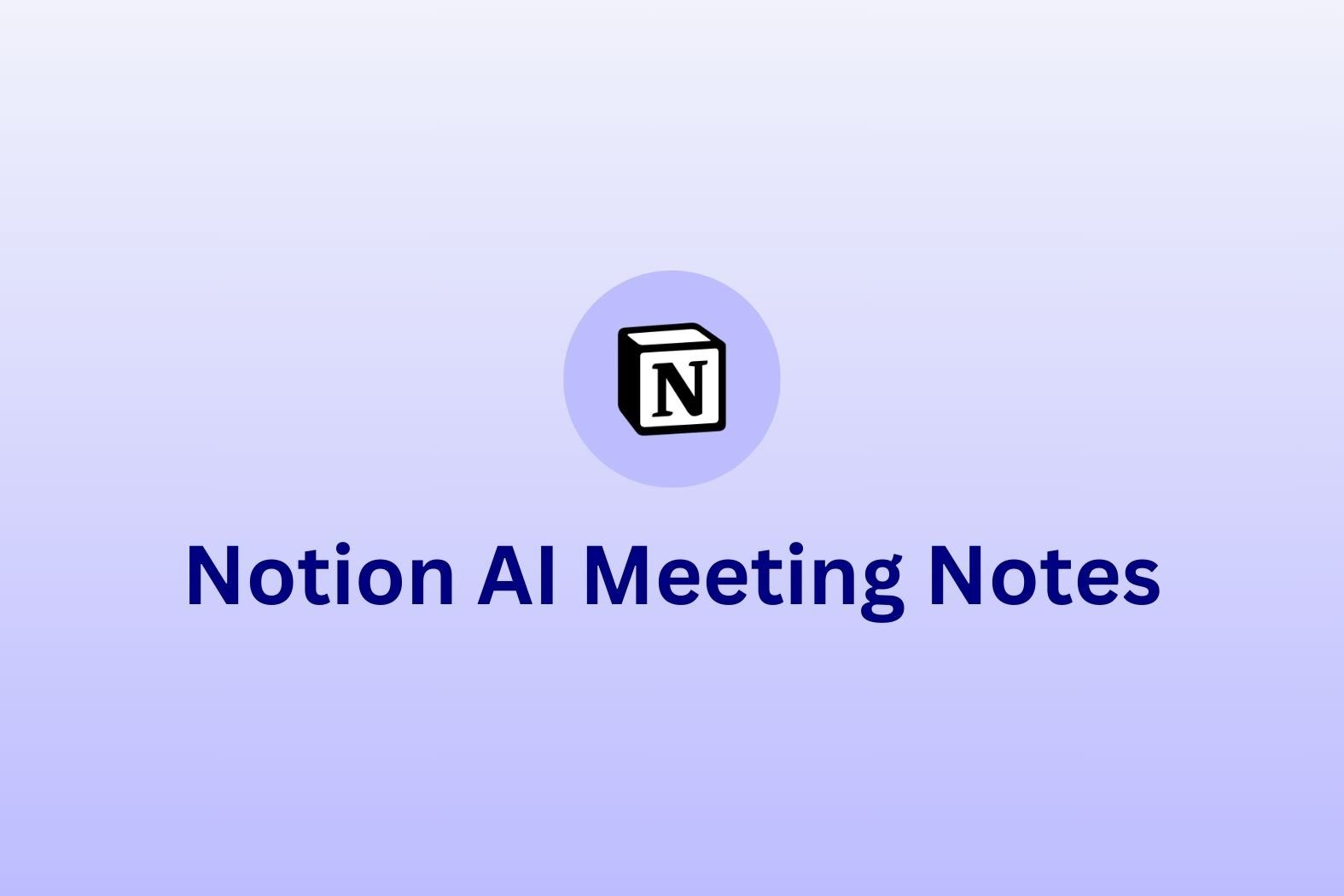Revenue intelligence is a data-driven approach that helps businesses optimize sales performance by integrating artificial intelligence (AI), machine learning, and real-time analytics. It goes beyond traditional sales reporting by capturing insights from multiple data sources—such as customer interactions, historical trends, and deal progress—to provide a comprehensive view of revenue opportunities.
As companies increasingly rely on data to drive decision-making, revenue intelligence has become a key strategy for improving forecasting accuracy, identifying risks in the sales pipeline, and enhancing overall efficiency. Unlike traditional sales analytics, which often rely on static reports and manual input, revenue intelligence platforms use automation to track engagement, measure deal health, and predict future revenue outcomes.
With the rapid advancements in AI and analytics, revenue intelligence is no longer just a competitive advantage—it’s becoming an essential component of modern sales and business operations. By creating a single source of truth, companies can align sales, marketing, and customer success teams, ensuring that every decision is backed by accurate and up-to-date insights.
In the sections that follow, we’ll break down the core components of revenue intelligence, how it works, the benefits it provides, and the key metrics businesses should track to maximize revenue potential.
What is Revenue Intelligence?
Revenue intelligence is a system that collects, analyzes, and interprets data to provide businesses with a complete view of their revenue operations. It combines artificial intelligence (AI), machine learning, and real-time analytics to track sales performance, customer interactions, and deal progress. Instead of relying on static reports or manual data entry, revenue intelligence continuously gathers information from various sources, offering insights that help sales teams make informed decisions.
- Data Integration
- AI-Powered Insights
- Real-Time Analytics
- Pipeline Visibility
Data Integration
Information from multiple platforms, such as CRM systems, emails, calls, and customer interactions, is centralized in one system. This eliminates data silos and provides a unified view of sales activities.
AI-Powered Insights
Machine learning models analyze past and present data to identify patterns, predict deal success, and highlight risks before they impact revenue.
Real-Time Analytics
Instead of relying on quarterly or monthly reports, revenue intelligence delivers continuous updates, allowing teams to adjust strategies as market conditions change.
Pipeline Visibility
Sales leaders can monitor deal progress in real-time, ensuring that revenue projections are based on the latest available data rather than outdated forecasts.
How Businesses Use Revenue Intelligence
Many companies use revenue intelligence to improve sales accuracy and efficiency. For example, a technology firm analyzing customer interactions may discover that certain email engagement patterns correlate with higher close rates, allowing them to refine their outreach strategy. Similarly, a SaaS company using AI-powered forecasting can identify which deals are at risk of stalling and take action to re-engage prospects.
Why Revenue Intelligence Matters
By integrating AI and real-time data, revenue intelligence helps businesses make smarter, faster decisions. Sales teams can focus their efforts on the most promising opportunities, while leadership gains a more accurate picture of future revenue. This approach improves forecasting, enhances customer relationships, and creates a streamlined, data-driven sales process.How Revenue Intelligence Works
Revenue intelligence transforms raw sales data into actionable insights by using AI, machine learning, and automation. The process involves gathering data from multiple sources, analyzing patterns, and providing real-time recommendations to improve decision-making.
How Can Revenue Intelligence Software Help?
Revenue intelligence software automates data collection and analysis, ensuring that sales teams have a complete and up-to-date view of their pipeline. Instead of relying on manual CRM updates or static reports, these platforms continuously pull in information from emails, call transcripts, meetings, and customer interactions. This real-time approach helps businesses identify trends, forecast revenue, and optimize sales strategies.
Data Collection from Multiple Sources
Revenue intelligence platforms integrate with CRM systems, email, phone calls, video meetings, and customer databases. They automatically capture every interaction, eliminating the need for sales reps to log information manually. Platforms like tl;dv automate the process by transcribing and summarizing sales meetings, ensuring no valuable insights are lost.
AI and Machine Learning Analysis
Advanced algorithms analyze collected data to detect patterns, sentiment, and engagement levels. For example, AI can assess tone and keyword usage in sales calls to determine whether a deal is progressing positively or if a prospect is disengaged.
Predictive Modeling for Sales Forecasting
Machine learning models use historical data to predict which deals are most likely to close, helping sales teams prioritize high-value opportunities. These insights improve revenue forecasting accuracy and reduce reliance on guesswork.
Pipeline Visibility and Risk Detection
Revenue intelligence software continuously monitors deal activity and alerts sales managers if a deal is at risk. For instance, if a prospect who was previously engaged suddenly stops responding to emails, the system flags this as a potential issue.
Real-Time Recommendations
AI-driven insights guide sales teams on the best actions to take. This might include suggesting the ideal follow-up time, recommending personalized outreach strategies, or highlighting accounts that need immediate attention.
Continuous Learning and Optimization
Because AI models improve over time, revenue intelligence systems become more accurate as they process more data. They refine forecasts, adjust risk assessments, and adapt to shifting market conditions.
Why AI and Automation Matter
By eliminating manual data entry, human bias, and outdated reporting methods, revenue intelligence allows businesses to make faster, more informed decisions. Sales teams gain a clear picture of deal health, improved forecasting accuracy, and a structured way to prioritize their efforts—leading to higher conversion rates and revenue growth.

The Key Components of Revenue Intelligence
Revenue intelligence relies on three core components to transform raw sales data into actionable insights:
- Data Integration
- Predictive Analytics
- Real-Time Insights
Each of these elements plays a crucial role in enhancing sales efficiency, forecasting accuracy, and overall business growth.
Data Integration
Revenue intelligence platforms pull data from multiple sources—CRM systems, emails, phone calls, video meetings, and customer interactions—to create a single, comprehensive view of the sales pipeline.
Challenges
- Sales teams often work with fragmented data spread across different tools, leading to incomplete insights.
- Manual data entry is prone to errors and inconsistencies, making it difficult to trust reports.
Solutions
- Automated data syncing ensures that all platforms are up to date, eliminating the need for manual input.
- AI-driven data cleansing removes duplicates and aligns data from different sources for consistency.
Example
A B2B SaaS company using revenue intelligence can automatically pull customer engagement data from emails, calls, and CRM records. This provides sales managers with a complete picture of which accounts are active and which require follow-up.
Predictive Analytics
Predictive analytics uses historical data, engagement trends, and AI models to forecast revenue and identify risks before they impact sales.
Challenges
- Traditional forecasting methods rely on gut instinct and outdated reports, leading to inaccurate predictions.
- Sales teams may struggle to identify which deals are most likely to close or stall.
Solutions
- AI-powered predictive models score deals based on past trends and engagement levels, helping sales reps focus on high-probability opportunities.
- Automated alerts notify managers if a deal shows signs of risk, such as a prospect going silent or a key decision-maker leaving the company.
Example
A tech startup using predictive analytics can identify which prospects are at risk of churn based on their declining engagement with sales emails. This allows the team to proactively re-engage them before the deal is lost.
Real-Time Insights
Instead of relying on quarterly or monthly reports, revenue intelligence platforms provide live updates on sales performance. This enables sales teams to adjust their strategies in real time.
Challenges
- Sales reps often rely on outdated or incomplete reports, causing them to miss opportunities.
- A lack of real-time visibility can lead to slow response times when deals start to go cold.
Solutions
- AI-powered dashboards provide instant insights into deal health, engagement trends, and revenue projections.
- Live notifications help sales teams respond quickly to customer behavior changes, such as a prospect opening a proposal or scheduling a demo.
Example
A financial services firm can receive instant alerts when a high-value lead interacts with their website, enabling the sales team to follow up immediately instead of waiting for the next report.
What Are the Benefits of Revenue Intelligence?
Revenue intelligence provides businesses with a data-driven approach to sales, helping teams optimize performance, improve forecasting, and drive revenue growth. By utilizing AI, real-time analytics, and predictive insights, organizations can make more informed decisions, increase efficiency, and align cross-functional teams.
- Enhanced Sales Efficiency
- Improved Decision-Making
- Increased Forecast Accuracy
- Cross-Functional Collaboration
Enhanced Sales Efficiency
Revenue intelligence automates data collection and analysis, reducing the time sales teams spend on administrative tasks. CRM updates, deal tracking, and activity logging are handled automatically, allowing sales representatives to focus on building relationships and closing deals.
Improved Decision-Making
Instead of relying on gut instinct or outdated reports, sales leaders can access real-time insights to guide strategy. AI-powered analytics highlight which deals have the highest chance of closing, recommend the best next steps, and flag potential risks before they impact revenue.
Increased Forecast Accuracy
Traditional sales forecasts often rely on subjective input from sales reps, leading to over-optimistic or inconsistent projections. Revenue intelligence improves forecast accuracy by analyzing past trends, deal velocity, and engagement levels. This allows businesses to create more reliable revenue predictions.
Cross-Functional Collaboration
By consolidating data from sales, marketing, and customer success teams, revenue intelligence ensures that everyone is working with a single, unified source of truth. This alignment helps:
- Marketing teams target high-intent leads more effectively.
- Sales teams prioritize deals with the highest chance of closing.
- Customer success teams proactively engage at-risk customers to improve retention.
This shared access to insights reduces silos, improves coordination, and streamlines the entire revenue process.
What Are Revenue Intelligence Metrics?
Revenue intelligence uses data-driven metrics to provide comprehensive insights into a company’s sales performance. Key metrics include revenue metrics, forecast metrics, deal metrics, and performance insights.
- Revenue Metrics
- Forecast Metrics
- Deal Metrics
- Performance Insights
Revenue Metrics
Revenue metrics evaluate the current state of the sales pipeline, offering insights into sales activities. Key revenue metrics include:
- Deal Velocity: Measures the speed at which deals progress through the sales pipeline. A higher deal velocity indicates efficient sales processes, leading to quicker revenue generation.
- Open Pipeline: Represents the total value or number of deals currently in progress. Monitoring the open pipeline helps sales teams understand how much potential revenue is in play and identify areas needing attention.
Forecast Metrics
Forecast metrics analyze current sales performance against historical data to identify trends and predict future outcomes. Important forecast metrics include:
- Pipeline Coverage: Compares the value of the current pipeline to future revenue targets. A healthy pipeline coverage ratio indicates that the sales team is on track to meet its goals.
- Win Rate: Calculates the percentage of closed deals won versus total deals. Monitoring win rates over time helps identify patterns and areas for improvement.
Deal Metrics
Deal metrics focus on the specifics of each deal, providing insights into their likelihood of closing successfully. Key deal metrics include:
- Engagement Score: Assesses the level of interaction between the sales team and the prospect. Higher engagement often correlates with a higher probability of closing the deal.
- Deal Stage Progression: Tracks the movement of deals through various stages of the sales process. Stalled deals may require additional attention or strategy adjustments.
Performance Insights
Performance insights analyze individual and team performance, aiding in coaching and development. Tools like tl;dv provide AI-generated meeting summaries, making it easier for sales managers to track rep performance, deal momentum, and client engagement trends.
Important performance metrics include:
- Activity Metrics: Monitor actions such as calls made, emails sent, and meetings scheduled. These metrics help assess productivity levels and identify areas for improvement.
- Quota Attainment: Measures the percentage of sales targets achieved by each team member. Regularly reviewing quota attainment helps in recognizing high performers and supporting those who may be struggling.
By closely monitoring these metrics, organizations can make informed decisions to optimize sales strategies, forecast revenue more accurately, and enhance overall sales performance.

Revenue Intelligence Tools and Software
Revenue intelligence software enables businesses to analyze sales data, forecast revenue, and optimize deal strategies by integrating AI-driven insights and automation. These tools typically fall into three categories:
- CRM-Integrated Tools
- Standalone Platforms
- AI-Powered Analytics
Choosing the right solution depends on business needs, existing tech infrastructure, and sales forecasting requirements.
CRM-Integrated Tools
These tools integrate directly into CRM platforms, helping businesses track deals, forecast revenue, and analyze sales trends without switching between multiple systems.
- Salesforce Revenue Cloud – A powerful revenue intelligence solution within Salesforce, providing forecasting, CPQ (Configure, Price, Quote), and billing automation to streamline sales operations.
- HubSpot Sales Hub – Expands HubSpot’s CRM with pipeline automation, AI-powered deal insights, and real-time analytics to improve revenue tracking.
Standalone Revenue Intelligence Platforms
These platforms work independently of CRMs, offering advanced forecasting, deal analysis, and sales performance insights.
- Aviso – Uses AI-driven forecasting, pipeline analysis, and sales coaching to help teams optimize their revenue strategy.
- InsightSquared – Specializes in real-time analytics and predictive modeling, providing businesses with deeper visibility into revenue trends and pipeline health.
AI-Powered Sales Intelligence Tools
These tools focus on data-driven insights, predictive analytics, and automation to enhance sales and marketing strategies.
- 6sense – Uses AI to identify high-intent buyers, allowing sales and marketing teams to prioritize outreach based on predictive analytics.
- ZoomInfo SalesOS – Provides B2B data enrichment, buyer intent tracking, and automated prospecting to help businesses target the right leads at the right time.
| Feature | Salesforce Revenue Cloud | HubSpot Sales Hub | Aviso | InsightSquared | 6sense | ZoomInfo SalesOS |
|---|---|---|---|---|---|---|
| Forecasting Accuracy | ✅ Strong | ✅ Good | ✅ Strong | ✅ Strong | ✅ Advanced | ✅ Moderate |
| Pipeline Management | ✅ Integrated | ✅ Integrated | ✅ Advanced | ✅ Advanced | ✅ Good | ✅ Moderate |
| AI-Driven Deal Insights | ✅ Moderate | ✅ Moderate | ✅ Strong | ✅ Strong | ✅ Strong | ✅ Strong |
| Buyer Intent Tracking | ❌ No | ❌ No | ✅ Yes | ✅ Yes | ✅ Strong | ✅ Strong |
Implementing Revenue Intelligence in Your Organization
Grow revenue — with data to guide you. Revenue intelligence helps businesses make data-driven decisions, improve forecasting, and optimize sales performance. Implementing it successfully requires a structured approach to ensure seamless integration with existing workflows.
What are the steps to integrate revenue intelligence into your business?
- Assess Your Current Sales Data & Processes
- Select the Right Revenue Intelligence Platform
- Ensure Data Integration & Clean-Up
- Set Up Key Revenue Metrics & Dashboards
- Train Your Sales, Marketing, and Customer Success Teams
- Monitor, Optimize, and Scale
Assess Your Current Sales Data & Processes
- Identify gaps in your existing CRM, sales tracking, and forecasting methods.
- Determine where manual reporting, data inconsistencies, or visibility issues are slowing decision-making.
Select the Right Revenue Intelligence Platform
- Choose between CRM-integrated tools (e.g., Salesforce Revenue Cloud, HubSpot Sales Hub) or standalone solutions (e.g., Aviso, InsightSquared).
- Consider AI-powered analytics for predictive insights and automation.
Ensure Data Integration & Clean-Up
- Consolidate data from emails, CRM, call logs, meetings, and third-party sources into one unified system.
- Implement automated data cleansing to remove duplicates and inconsistencies.
Set Up Key Revenue Metrics & Dashboards
- Define success metrics such as deal velocity, win rate, pipeline coverage, and engagement scores.
- Configure dashboards that provide real-time insights into revenue performance.
Train Your Sales, Marketing, and Customer Success Teams
- Ensure all departments understand how to use the platform and interpret insights.
- Provide ongoing coaching and support to drive adoption and maximize effectiveness.
Monitor, Optimize, and Scale
- Regularly review data accuracy, forecasting trends, and team adoption.
- Adjust strategies based on real-time insights and AI-generated recommendations.
Choosing the Right Revenue Intelligence Platform
- Scalability – Will the tool support your business as it grows?
- Integration – Does it connect easily with your existing CRM and sales stack?
- Ease of Use – Can sales teams quickly adopt it without disrupting their workflow?
- AI Capabilities – Does it provide actionable recommendations beyond static reports.
While choosing the right platform is crucial, ensuring a smooth implementation comes with its own challenges. Here’s how to tackle common issues:
| Challenge | Solution |
|---|---|
| Data inconsistencies | Implement automated data cleansing and validation. |
| Low user adoption | Provide hands-on training and demonstrate tangible benefits. |
| Integration issues | Choose a platform with API support and CRM compatibility. |
| Over-reliance on AI | Balance automation with human-driven decision-making. |
Case Studies and Success Stories
Revenue intelligence has helped companies across various industries improve forecasting accuracy, sales productivity, and revenue growth. The following examples highlight real-world success stories with measurable results.
Palantir Technologies: AI-Driven Sales Growth
Palantir Technologies launched an artificial intelligence platform to enhance revenue intelligence, particularly in the U.S. commercial market. In Q2, AI-driven sales strategies generated $159 million in revenue, marking a 55% increase year-over-year. This showcases how AI-powered revenue intelligence can drive substantial growth.
HubSpot: Increasing Sales Productivity with Revenue Intelligence
HubSpot implemented revenue intelligence to analyze customer interactions and buying behavior. By tracking engagement with its website and sales team, HubSpot identified key trends that optimized its sales funnel, resulting in higher conversion rates and increased sales efficiency.
Proven Impact of Revenue Intelligence
These case studies highlight how AI-driven insights, predictive analytics, and strategic automation have helped businesses:
- Increase revenue through optimized pricing and sales strategies.
- Enhance forecasting accuracy by using real-time data and AI modeling.
- Improve sales productivity with better engagement tracking and deal prioritization.
Companies that invest in revenue intelligence gain a competitive advantage by making data-driven decisions that lead to sustained growth and higher profitability.
The Future of Revenue Intelligence
Revenue intelligence is rapidly evolving, driven by advancements in AI, automation, and real-time analytics. As businesses continue to shift toward data-driven decision-making, the future of revenue intelligence will bring even greater precision to forecasting, efficiency in sales processes, and deeper insights into revenue optimization.
Looking ahead, AI-powered forecasting will become more sophisticated, allowing businesses to predict revenue with greater accuracy by analyzing historical data, deal velocity, and market conditions in real time. Sales teams will be able to identify high-risk deals earlier, making proactive interventions possible before opportunities slip away.
Revenue intelligence platforms will also integrate more seamlessly with CRMs, automation tools, and sales engagement software. The ability to consolidate cross-functional insights will enable marketing, sales, and customer success teams to collaborate more effectively, ensuring a unified approach to revenue growth.
The rise of AI-driven sales assistants will further transform the landscape. Repetitive tasks such as data entry, follow-ups, and deal risk assessments will be handled by automation, freeing sales teams to focus on relationship-building and strategic decision-making. AI-powered voice and text assistants will provide real-time coaching, analyzing sales calls, emails, and meetings to offer actionable insights.
Additionally, buyer intent and behavioral data will take center stage, giving sales teams a deeper understanding of prospect engagement, customer sentiment, and purchasing intent. By leveraging real-time insights, businesses will be able to personalize outreach, prioritize high-value leads, and close deals faster.
As AI becomes more embedded in revenue intelligence, companies will also need to navigate privacy concerns and ethical AI use. Ensuring compliance with data protection laws like GDPR and CCPA will be crucial in maintaining transparency and customer trust. Businesses that prioritize responsible AI practices will gain a competitive advantage in an increasingly privacy-conscious world.
The future of revenue intelligence is more than just improved analytics. It is about delivering proactive recommendations, predictive risk analysis, and AI-powered automation. Businesses that embrace these cutting-edge technologies will maximize revenue opportunities, streamline operations, and position themselves as leaders in the evolving world of data-driven sales and revenue management.
Frequently Asked Questions About Revenue Intelligence
What is revenue intelligence, and how is it different from traditional sales analytics?
Revenue intelligence uses AI to collect and analyze data from CRM systems, emails, sales calls, and customer interactions. Unlike traditional sales analytics, which rely on manual input and historical data, revenue intelligence provides real-time, automated insights to optimize pipelines, improve forecasting, and support data-driven decisions.
How can revenue intelligence benefit my sales team?
It improves forecast accuracy, boosts sales efficiency by reducing manual CRM updates, and enhances decision-making with real-time insights on deal health and lead prioritization.
What are the key components of a revenue intelligence platform?
A strong platform includes data integration (pulling from CRM, emails, and calls), predictive analytics (forecasting revenue trends), and real-time insights (tracking engagement and deal progress).
How does AI enhance revenue intelligence?
What challenges come with implementing revenue intelligence?
Common obstacles include data integration complexities, resistance to change, and user adoption issues. Choosing an intuitive platform and providing proper training can ease the transition.
Which industries benefit most from revenue intelligence?
Industries like SaaS, finance, healthcare, and e-commerce use revenue intelligence to optimize forecasting, track client engagement, and refine sales strategies.
How do I choose the right revenue intelligence tool for my business?
Look for CRM integration, ease of use, scalability, and AI-driven insights to ensure the platform fits your team’s needs.
Can small businesses benefit from revenue intelligence?
Yes, many platforms offer affordable, scalable solutions that automate sales data, improve lead qualification, and enhance pipeline visibility without requiring enterprise-level investment.
What key metrics should be tracked with revenue intelligence?
Important KPIs include deal velocity, pipeline value, forecast accuracy, win rate, and engagement scores to measure sales performance and revenue trends.
How does revenue intelligence improve customer relationships?
By analyzing customer behavior, improving follow-ups with automation, and identifying churn risks early, revenue intelligence helps businesses build stronger relationships and drive long-term growth.





